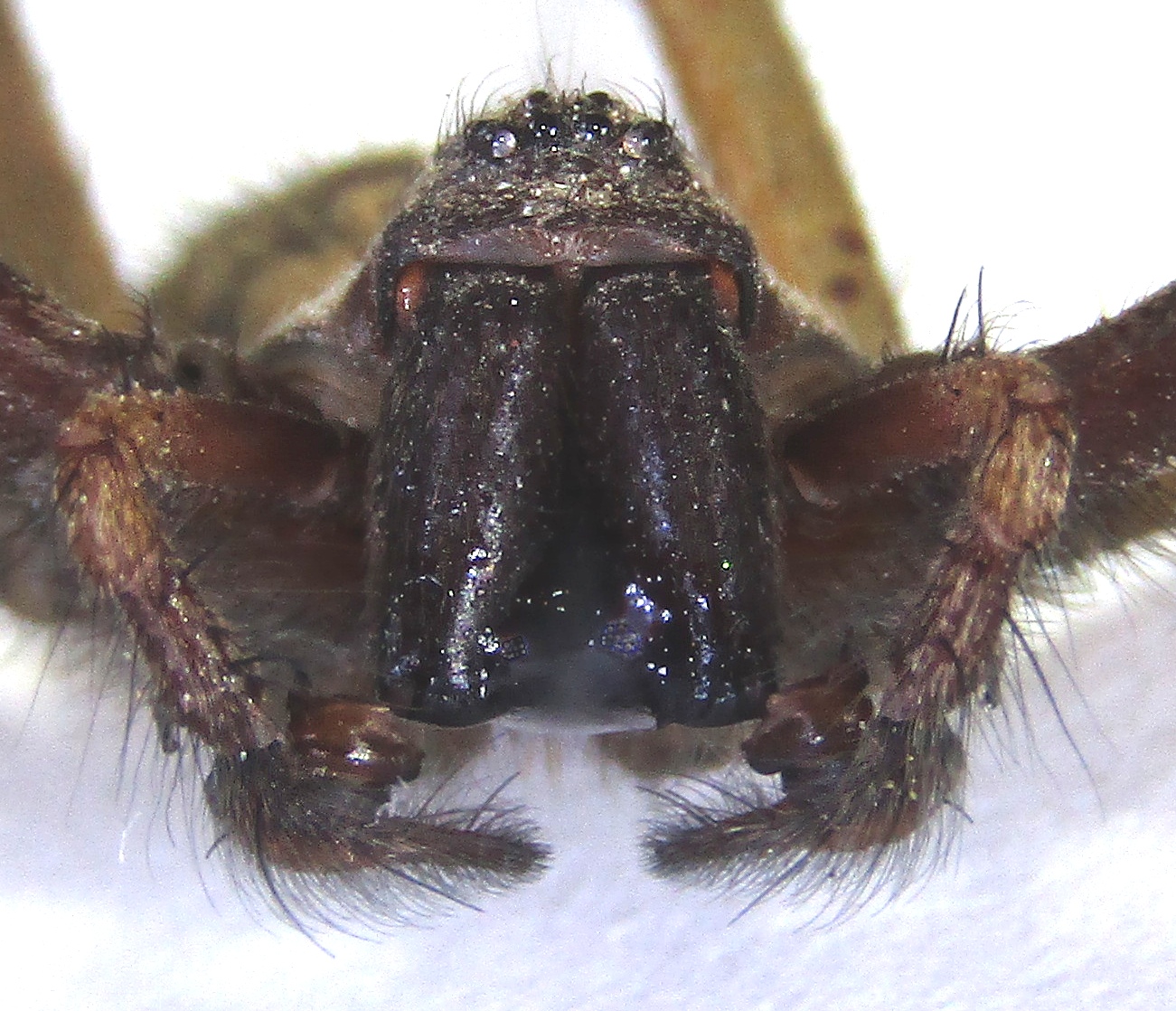 |
Giant House Spider - (Eratigena atrica). The presence
of palpal bulbs indicates that this is a male. These are used to transfer
sperm to the female seminal receptacles during mating. Most of the house
Spiders that are found in houses in autumn are males searching for females.
|
Father Ted: "OK, one last time. These are small (holds up toy
cows)... but the ones out there (points out of the window) are far away.
Small... far away... (Dougal shakes head in confusion) ah forget it!”
See the excerpt here
I can imagine Father Ted would have an even harder time trying to explain
these spider close ups.
Father Ted: "This is small (points to spider)... but this one
(points to the photo) is highly magnified. Small... magnified... (Dougal shakes
head in confusion) ah forget it!”
|
 |
| My makeshift spider 'studio' |
|
 |
Garden Spider (Araneus diadematus). The protruding structure
at the base of the abdomen is the epigyne. This is used to receive and
direct the palpal organ of the male during copulation. The form of the epigyne
varies from species to species and corresponds to male's palp. There are lots of examples of this in nature - similar species have genitalia which only
'fit' members of the same species.
In this way intra-species mating is prevented. There are many example of this
in moths. Pairs of species often look identical to the naked eye, and can only
be separated by microscopic examination of the genitalia.
How has this evolved? The lock and key hypothesis proposes that genitalia
evolve by hybridization avoidance. Hybrids being inferior from a survival point of view, therefore less likely to pass on their genes. This drives
the evolution of male genitalia with a proper mechanical fit to female
genitalia.
Alernatively, the sexual selection hypothesis, proposes that
divergent evolution of genitalia is the result of sexual selection driven by
varying paternity success among males.
| | |
Recommended Posts For You
Get this



Ah yes I remember the sketch - another classic from Father Ted. Great macro detail in these images - were they taken with your bridge camera? Interesting info about spider mating - they have a different way of doing things indeed! :)
ReplyDeleteYes the spider way of doing things wouldn't be for everyone :). The House spider was taken with my bridge. The garden spider was one I took a bit ago with a compact - I was really surprised to look back through some photos i took with the compact - pretty decent macro
ReplyDelete